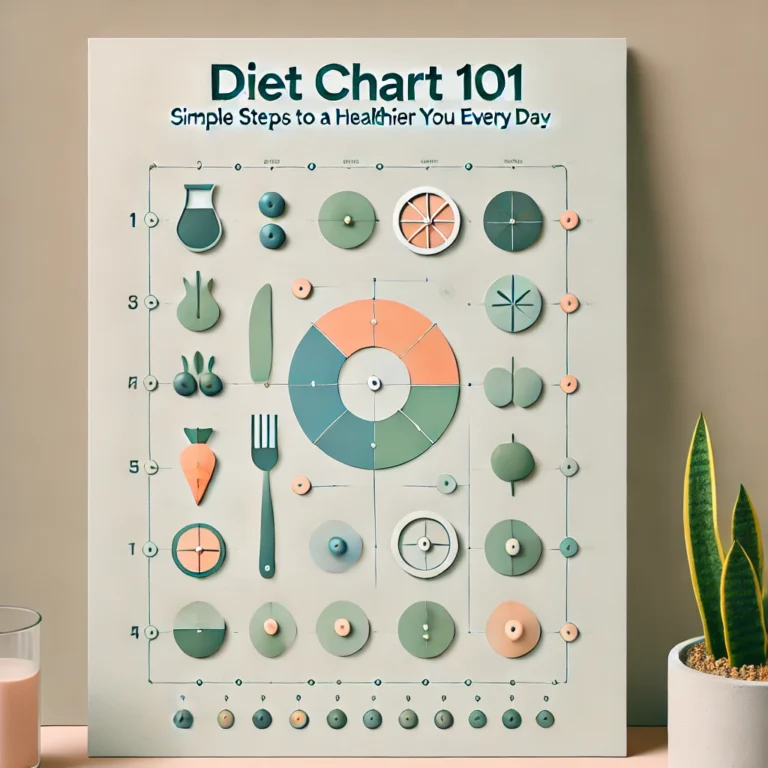Are you struggling to figure out what to eat to maintain a healthy lifestyle? Understanding how to structure your meals is the first step toward better health. A diet chart can be your guide!
Introduction: Why a Diet Chart Matters
In today’s fast-paced world, many of us find it challenging to maintain a balanced diet. Whether it’s due to time constraints, lack of knowledge, or access to healthy foods, our eating habits often fall short. That’s where a diet chart comes in—it helps structure your meals, ensuring you get the right nutrients daily.
If you’re aiming to improve your health, manage weight, or boost your energy, a well-crafted diet chart can be the foundation. In this guide, we’ll walk you through the basics of creating a personalized diet chart and how it can transform your health.
What Is a Diet Chart?
A diet chart is a structured plan that outlines what, when, and how much to eat. It’s designed to ensure you consume a balanced diet that provides all essential nutrients like proteins, carbohydrates, fats, vitamins, and minerals. Diet charts vary based on individual needs, such as age, weight, lifestyle, and specific health goals.
Benefits of Following a Diet Chart:
- Weight Management: Stay on track with portion control and calorie intake.
- Improved Energy Levels: Proper meal planning boosts your energy.
- Better Nutrient Absorption: Helps ensure you’re getting the right nutrients.
- Consistent Eating Habits: Prevents overeating or skipping meals.
Step-by-Step Guide to Creating a Personalized Diet Chart
1. Know Your Body’s Nutritional Needs
Before you create a diet chart, it’s essential to understand your body’s nutritional needs. The daily intake of nutrients varies by individual factors such as age, gender, activity level, and health conditions.
- For Weight Loss: If you’re trying to shed some pounds, aim for a calorie deficit by reducing portion sizes or choosing low-calorie, nutrient-dense foods.
- For Muscle Building: Focus on increasing protein intake with lean meats, fish, legumes, and dairy products.
- For General Health: Incorporate a balance of macronutrients—carbs, proteins, and fats—along with fiber-rich foods.
2. Design Balanced Meals
A well-balanced meal should include:
- Proteins: Essential for muscle repair and growth (e.g., chicken, fish, tofu).
- Carbohydrates: Provide energy; opt for whole grains (e.g., brown rice, quinoa, oats).
- Fats: Healthy fats help with hormone regulation and cell function (e.g., avocados, nuts, olive oil).
- Vegetables: Packed with vitamins, minerals, and fiber (e.g., leafy greens, carrots, broccoli).
- Fruits: Natural sources of sugars and essential vitamins (e.g., apples, berries, bananas).
3. Timing Is Key
When it comes to meal planning, timing plays a significant role. For optimal digestion and energy levels, follow these timing guidelines:
- Breakfast: Eat within one hour of waking up to kickstart your metabolism.
- Snacks: Include healthy snacks mid-morning and afternoon to prevent overeating during meals.
- Dinner: Have your final meal at least two hours before bedtime to avoid indigestion.
4. Hydration: Don’t Forget Water!
Water is often overlooked in diet plans, but it’s crucial for overall health. Aim for at least 8 glasses of water per day to support digestion, nutrient absorption, and detoxification.
Sample Diet Chart for General Health
| Meal | Time | Food Items |
|---|---|---|
| Breakfast | 7:00 AM | Oats with fresh fruit, boiled egg, green tea |
| Mid-Morning | 10:00 AM | A handful of almonds and an apple |
| Lunch | 1:00 PM | Grilled chicken salad with quinoa and vegetables |
| Snack | 4:00 PM | Greek yogurt with honey and flax seeds |
| Dinner | 7:00 PM | Steamed fish with brown rice and stir-fried veggies |
| Post-Dinner | 9:00 PM | Chamomile tea |


